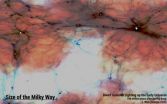(Press-News.org) Investment magnate Warren Buffett has famously suggested that investors should try to "be fearful when others are greedy and be greedy only when others are fearful."
That turns out to be excellent advice, according to the results of a new study by researchers at Caltech and Virginia Tech that looked at the brain activity and behavior of people trading in experimental markets where price bubbles formed. In such markets, where price far outpaces actual value, it appears that wise traders receive an early warning signal from their brains—a warning that makes them feel uncomfortable and urges them to sell, sell, sell.
"Seeing what's going on in people's brains when they are trading suggests that Buffet was right on target," says Colin Camerer, the Robert Kirby Professor of Behavioral Economics at Caltech.
That is because in their experimental markets, Camerer and his colleagues found two distinct types of activity in the brains of participants—one that made a small fraction of participants nervous and prompted them to sell their experimental shares even as prices were on the rise, and another that was much more common and made traders behave in a greedy way, buying aggressively during the bubble and even after the peak. The lucky few who received the early warning signal got out of the market early, ultimately causing the bubble to burst, and earned the most money. The others displayed what former Federal Reserve chairman Alan Greenspan called "irrational exuberance" and lost their proverbial shirts.
A paper about the experiment and the team's findings appears this week in the journal Proceedings of the National Academy of Sciences. Alec Smith, the lead author on the paper, is a visiting associate at Caltech. Additional coauthors are from the Virginia Tech Carilion Research Institute.
The researchers set up a simple experimental market in which they were able to control the fundamental, or actual, value of a traded risky asset. In each of 16 sessions, about 20 participants were told how an on-screen trading market worked and were given 100 units of experimental currency and six shares of the risky asset. Then, over the course of 50 trading periods, the traders indicated by pressing keyboard buttons whether they wanted to buy, sell, or hold shares at various prices.
Given the way the experiment was set up, the fundamental price of the risky asset was 14 currency units. Yet in many sessions, the traded price rose well above that—sometimes three to five times as high—creating bubble markets that eventually crashed.
During the experiment, two or three additional subjects per session also participated in the market while having their brains scanned by a functional magnetic resonance imaging (fMRI) machine. In fMRI, blood flow is monitored and used as a proxy for brain activation. If a brain region shows a relatively high level of blood oxygenation during a task, that region is thought to be particularly active.
At the end of the experiment, the researchers first sought to understand the behavioral data—the choices the participants made and the resulting market activity—before analyzing the fMRI scans.
"The first thing we saw was that even in an environment where you don't have squawking heads and all kinds of other information being fed to people, you can get bubbles just through pricing dynamics that occur naturally," says Camerer. This finding is at odds with what some economists have held—that bubbles are rare or are caused by misinformation or hype.
Next, the researchers divided the participants into three categories based on their earnings during their 50 trading periods—low, medium, and high earners. They found that the low earners tended to be momentum buyers who started buying as prices went up and then kept buying even as prices tanked. The middle-of-the-road folks didn't take many risks at all and, as a result, neither made nor lost the most money. And the traders who earned the most bought early and sold when prices were on the rise.
"The high-earning traders are the most interesting people to us," Camerer says. "Emotionally, they have to do something really hard: sell into a rising market. We thought that something must be going on in their brains that gives them an early warning signal."
To reveal what was actually occurring in the brains of the subjects—and the nature of that warning signal—Camerer and his colleagues analyzed the fMRI scans. Using this data, the researchers first looked for an area of the brain that was unusually active when the results screen came up that told participants their outcome for the last trading period. It turned out that a region called the nucleus accumbens (NAcc) lit up at that time in all participants, showing more activity when shares were bought or sold. The NAcc is associated with reward processing—it lights up when people are given expected rewards such as money or juice or a smile, for example. So it was not particularly surprising to see that the NAcc was activated when traders found out how their gambles paid off.
What was surprising, though, was that low earners were very sensitive to activity in the NAcc: when they experienced the most activity in the NAcc, they bought a lot of the risky asset. "That is a correlation we can call irrational exuberance," Camerer says. "Exuberance is the brain signal, and the irrational part is buying so many shares. The people who make the most money have low sensitivity to the same brain signal. Even though they're having the same mental reaction, they're not translating it into buying as aggressively."
Returning to the question of the high earners and their early warning signal, the researchers hypothesized that a part of the brain called the insular cortex, or insula, might be serving as that bellwether. The insula was a good candidate because previous studies had linked it to financial uncertainty and risk aversion. It is also known to reflect negative emotions associated with bodily sensations such as being shocked or smelling something disgusting, or even with feelings of social discomfort like those that come with being treated unfairly or being excluded.
Looking at the brain data of the high earners, the researchers found that insula activity did indeed increase shortly before the traders switched from buying to selling. And again, Camerer notes, "The prices were still going up at that time, so they couldn't be making pessimistic predictions just based on the recent price trend. We think this is a real warning signal."
Meanwhile, in the low earners, insula activity actually decreased, perhaps allowing their irrational exuberance to continue unchecked.
Read Montague, director of the Human Neuroimaging Laboratory at the Virginia Tech Carilion Research Institute and one of the paper's senior authors, emphasizes the importance of group dynamics, or group thinking, in the study. "Individual human brains are indeed powerful alone, but in groups we know they can build bridges, spacecraft, microscopes, and even economic systems," he says. "This is one of the next frontiers in neuroscience—understanding the social mind."
INFORMATION:
Additional coauthors on the paper, "Irrational exuberance and neural warning signals during endogenous experimental market bubbles," include Terry Lohrenz and Justin King of Virginia Tech Carilion Research Institute in Roanoke, Virginia. Montague is also a professor at the Wellcome Trust Centre for Neuroimaging at University College London. The work was supported by the National Science Foundation, the Betty and Gordon Moore Foundation, and the Lipper Family Foundation.
Neuroeconomists confirm Warren Buffett's wisdom
Brain research at Caltech and Virginia Tech suggests an early warning signal tips off smart traders
2014-07-07
ELSE PRESS RELEASES FROM THIS DATE:
Smart and socially adept
2014-07-07
Wanted: Highly skilled individual who is also a team player. In other words, someone who knows his or her stuff and also plays well with others.
Two qualities are particularly essential for success in the workplace: book smarts and social adeptness. The folks who do well tend to demonstrate one or the other. However, according to research conducted by UC Santa Barbara economist Catherine Weinberger, the individuals who reach the highest rungs on the corporate ladder are smart and social. Her findings appear in a recent online issue of the Review of Economics and Statistics.
Weinberger, ...
The tortoise and the hare: A sex difference in marathon pacing
2014-07-07
ALLENDALE, Mich. — Men are more likely than women to slow their pace in the marathon, according to a new study led by a Grand Valley State University researcher. The findings were published in Medicine & Science in Sports & Exercise.
The study, led by Robert Deaner, associate professor of psychology at Grand Valley State, was based on 14 marathons that occurred in the U.S. in 2011, and it included almost 92,000 performances. On average, men ran the second half of the marathon 15.6 percent slower than the first half, whereas women slowed by an average of 11.7 percent. ...
Slim down for the health of it and possibly reduce your hot flashes in the process
2014-07-07
CLEVELAND, Ohio (July 7, 2014)—Now women have yet one more incentive to lose weight as a new study has shown evidence that behavioral weight loss can help manage menopausal hot flashes.
The pilot study, which was published online last month in Menopause, the journal of The North American Menopause Society (NAMS), consisted of 40 overweight or obese white and African-American women with hot flashes, which are the most prevalent symptom of menopause. In fact, more than 70% of women report hot flashes during the menopausal transition, with many of these women reporting frequent ...
US scientists don't publish articles about potential role of innate variation in athletic performance
2014-07-07
ALLENDALE, Mich. — Compared to scientists working in other countries, U.S.-based scientists are underrepresented as authors of articles on the potential role of innate variation in athletic performance that are published in peer-reviewed science journals, according to Grand Valley State University researchers.
The findings are published in the online journal SpringerPlus.
The research, conducted by Michael P. Lombardo, professor of biology, and Shadie Emiah, a Grand Valley State graduate student, used information about the authors of 290 articles published in peer-reviewed ...
Of non-marijuana drug users in the ER, nearly all are problem drug users
2014-07-07
WASHINGTON —Of emergency patients who reported any drug other than marijuana as their primary drug of use, 90.7 percent met the criteria for problematic drug use. Among patients who reported cannabis (marijuana) as their primary drug, almost half (46.6 percent) met the criteria for having a drug problem, according to a study published online Thursday in Annals of Emergency Medicine ("Identifying Patients with Problematic Drug Use in the Emergency Department: Results of a Multi-Site Study.)
"Of patients who reported any drug use in the previous 30 days, nearly two-thirds ...
Sitting too much, not just lack of exercise, is detrimental to cardiovascular health
2014-07-07
Dallas – July 7, 2014 – Cardiologists at UT Southwestern Medical Center found that sedentary behaviors may lower cardiorespiratory fitness levels. New evidence suggests that two hours of sedentary behavior can be just as harmful as 20 minutes of exercise is beneficial.
The study, published in today's online edition of Mayo Clinic Proceedings, examined the association between fitness levels, daily exercise, and sedentary behavior, based on data from 2,223 participants in the National Health and Nutrition Examination Survey (NHANES).
Sedentary behavior involves low levels ...
Rats purposefully use their whiskers in different ways to help navigate in the dark
2014-07-07
VIDEO:
This is an example of the use of the whiskers for collision avoidance. Unexpected whisker contact
results in rapid deceleration of forward locomotion velocity and the animal orients to the...
Click here for more information.
The way rats use their whiskers is more similar to how humans use their hands and fingers than previously thought, new research from the University of Sheffield has found.
Rats deliberately change how they sense their environment using their ...
Small, but plentiful: How the faintest galaxies illuminated the early universe
2014-07-07
Light from tiny galaxies over 13 billion years ago played a larger role than previously thought in creating the conditions in the universe as we know it today, a new study has found. Ultraviolet (UV) light from stars in these faint dwarf galaxies helped strip interstellar hydrogen of electrons in a process called reionization.
The epoch of reionization began about 200 million years after the Big Bang and astrophysicists agree that it took about 800 million more for the entire universe to become reionized. It marked the last major phase transition of gas in the universe, ...
NASA satellites see Neoguri grow into a super typhoon
2014-07-07
From July 4 to July 7 Tropical Cyclone Neoguri strengthened from a tropical storm into a supertyphoon. NASA's Terra and Aqua satellites passed over the rapidly intensifying storm and provided forecasters with visible, infrared and microwave data on the powerful supertyphoon.
On July 4 at 0900 UTC (5 a.m. EDT) Neoguri had maximum sustained winds near 55 knots (63.2 mph/101.9 kph). It was located near 13.1 north and 141.4 east, about 207 nautical miles (238.2 miles/383.4 km) west of Andersen Air Force Base, Guam. It was moving to the northwest at 13 knots (14.9 mph/24.0 ...
The new atomic age: Building smaller, greener electronics
2014-07-07
(Edmonton) In the drive to get small, Robert Wolkow and his lab at the University of Alberta are taking giant steps forward.
The digital age has resulted in a succession of smaller, cleaner and less power-hungry technologies since the days the personal computer fit atop a desk, replacing mainframe models that once filled entire rooms. Desktop PCs have since given way to smaller and smaller laptops, smartphones and devices that most of us carry around in our pockets.
But as Wolkow points out, this technological shrinkage can only go so far when using traditional transistor-based ...
LAST 30 PRESS RELEASES:
Pandemic ‘beneath the surface’ has been quietly wiping out sea urchins around the world
Tea linked to stronger bones in older women, while coffee may pose risks
School feeding programs lead to modest but meaningful results
Researchers develop AI Tool to identify undiagnosed Alzheimer's cases while reducing disparities
Seaweed based carbon catalyst offers metal free solution for removing antibiotics from water
Simple organic additive supercharges UV treatment of “forever chemical” PFOA
£13m NHS bill for ‘mismanagement’ of menstrual bleeds
The Lancet Psychiatry: Slow tapering plus therapy most effective strategy for stopping antidepressants, finds major meta-analysis
Body image issues in adolescence linked to depression in adulthood
Child sexual exploitation and abuse online surges amid rapid tech change; new tool for preventing abuse unveiled for path forward
Dragon-slaying saints performed green-fingered medieval miracles, new study reveals
New research identifies shared genetic factors between addiction and educational attainment
Epilepsy can lead to earlier deaths in people with intellectual disabilities, study shows
Global study suggests the underlying problems of ECT patients are often ignored
Mapping ‘dark’ regions of the genome illuminates how cells respond to their environment
ECOG-ACRIN and Caris Life Sciences unveil first findings from a multi-year collaboration to advance AI-powered multimodal tools for breast cancer recurrence risk stratification
Satellite data helps UNM researchers map massive rupture of 2025 Myanmar earthquake
Twisting Spins: Florida State University researchers explore chemical boundaries to create new magnetic material
Mayo Clinic researchers find new hope for toughest myeloma through off-the-shelf immunotherapy
Cell-free DNA Could Detect Adverse Events from Immunotherapy
American College of Cardiology announces Fuster Prevention Forum
AAN issues new guideline for the management of functional seizures
Could GLP-1 drugs affect risk of epilepsy for people with diabetes?
New circoviruses discovered in pilot whales and orcas from the North Atlantic
Study finds increase in risk of binge drinking among 12th graders who use 2 or more cannabis products
New paper-based technology could transform cancer drug testing
Opioids: clarifying the concept of safe supply to save lives
New species of tiny pumpkin toadlet discovered in Brazil highlights need for conservation in the mountain forests of Serra do Quiriri
Reciprocity matters--people were more supportive of climate policies in their country if they believed other countries were making significant efforts themselves
Stanford Medicine study shows why mRNA-based COVID-19 vaccines can cause myocarditis
[Press-News.org] Neuroeconomists confirm Warren Buffett's wisdomBrain research at Caltech and Virginia Tech suggests an early warning signal tips off smart traders





